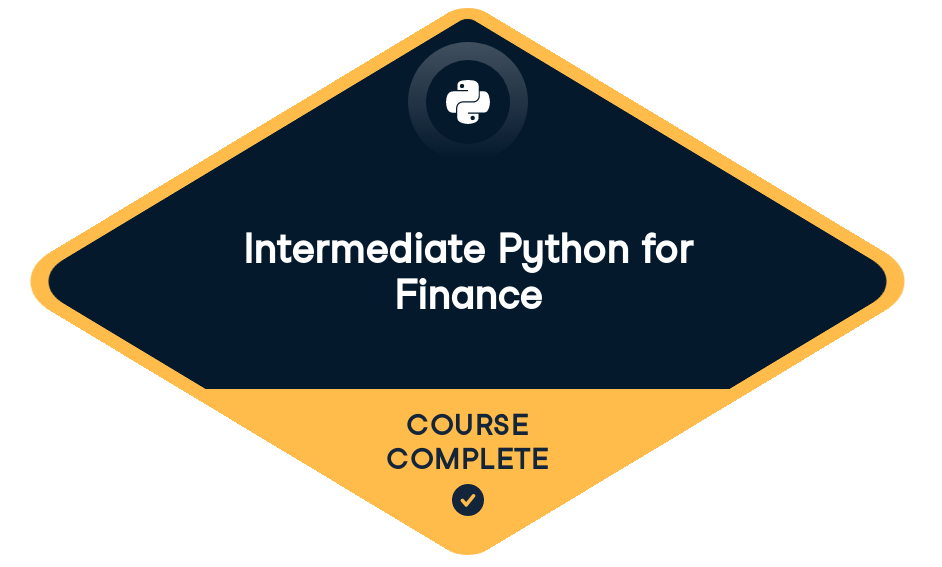
Loved by learners at thousands of companies
Course Description
Are you a financial or business analyst, or simply looking for an easier way to manage your stock portfolio? If so learning Python can automate financial tasks such as calculating risk, mapping market health, and visualizing a stock's price trends, saving you time and money.In this course, you’ll learn how to use Python data structures, execution control statements, and DataFrames to manipulate financial data. You will then work with pandas, using data from the Federal Reserve Bank, to explore national economic trends—an essential part of understanding investment strategies. You will also calculate risk based on stock price data, and display this data in easy to read plots. By the end of this course, you’ll be the new Python of Wall Street.
Training 2 or more people?
Get your team access to the full DataCamp platform, including all the features.- 1
Datetimes and Dictionaries
FreeIn this chapter, you’ll learn how to create and manipulate Python datetime objects to help you identify key financial events, such as Black Friday. You’ll also learn how to store and efficiently look up items using Python dictionaries.
Representing time with datetimes50 xpCreating datetimes for dates100 xpDatetimes from strings100 xpConverting format with datetimes100 xpWorking with datetimes50 xpAccessing datetime attributes100 xpComparing datetimes100 xpMaking relative datetimes100 xpDictionaries50 xpCreating and accessing dictionaries100 xpAccessing safely and deleting100 xp - 2
Control Flow and Logic
Through hands-on activities, you’ll discover how to use Boolean logic to determine truth and use comparison and equality operators to control execution in if-statements and loops.
Comparison operators50 xpEquality across types50 xpAssignment and equality100 xpComparing dividends100 xpBoolean operators50 xpDecisions with Boolean operations100 xpAssigning variables with Boolean operators100 xpNegating with Boolean operators100 xpIf statements50 xpControl statements50 xpComparing sales and purchases100 xpBranching with elif and else100 xpFor and while loops50 xpBreaking out of a for loop100 xpControlling loop execution100 xp - 3
Pandas Dataframe
Discover how to create and access DataFrames with pandas using financial data from other data structures, including Dicts, lists, and CSV files. You’ll then uncover additional insights, as you aggregate data across rows or columns, calculate averages, and extend your data using functions.
Creating a DataFrame50 xpCreating DataFrames100 xpReading market history100 xpAccessing Data50 xpAccessing using names100 xpAccessing using indexes100 xpAggregating and summarizing50 xpMean prices50 xpMedian prices100 xpExtending and manipulating data50 xpCreating new columns100 xpDropping columns from DataFrame100 xpManipulating data with Pandas100 xp - 4
Working with NASDAQ Stock Data
In this final chapter, you’ll try your hand at working with real-world NASDAQ stock data as you learn how to interpret new data, create masks to filter data, and visualize your findings with plots.
Peeking at data with head, tail, and describe50 xpWhy use describe50 xpPeek at top and bottom100 xpDescribing data100 xpFiltering data50 xpWhy filter data50 xpFiltering stock data.100 xpSelecting data from data range100 xpPlotting data50 xpIdentifying plot type50 xpMaking a line plot100 xpChoose kind of plot100 xpWrapping up50 xp
Training 2 or more people?
Get your team access to the full DataCamp platform, including all the features.Join over 17 million learners and start Intermediate Python for Finance today!
Create Your Free Account
or
By continuing, you accept our Terms of Use, our Privacy Policy and that your data is stored in the USA.